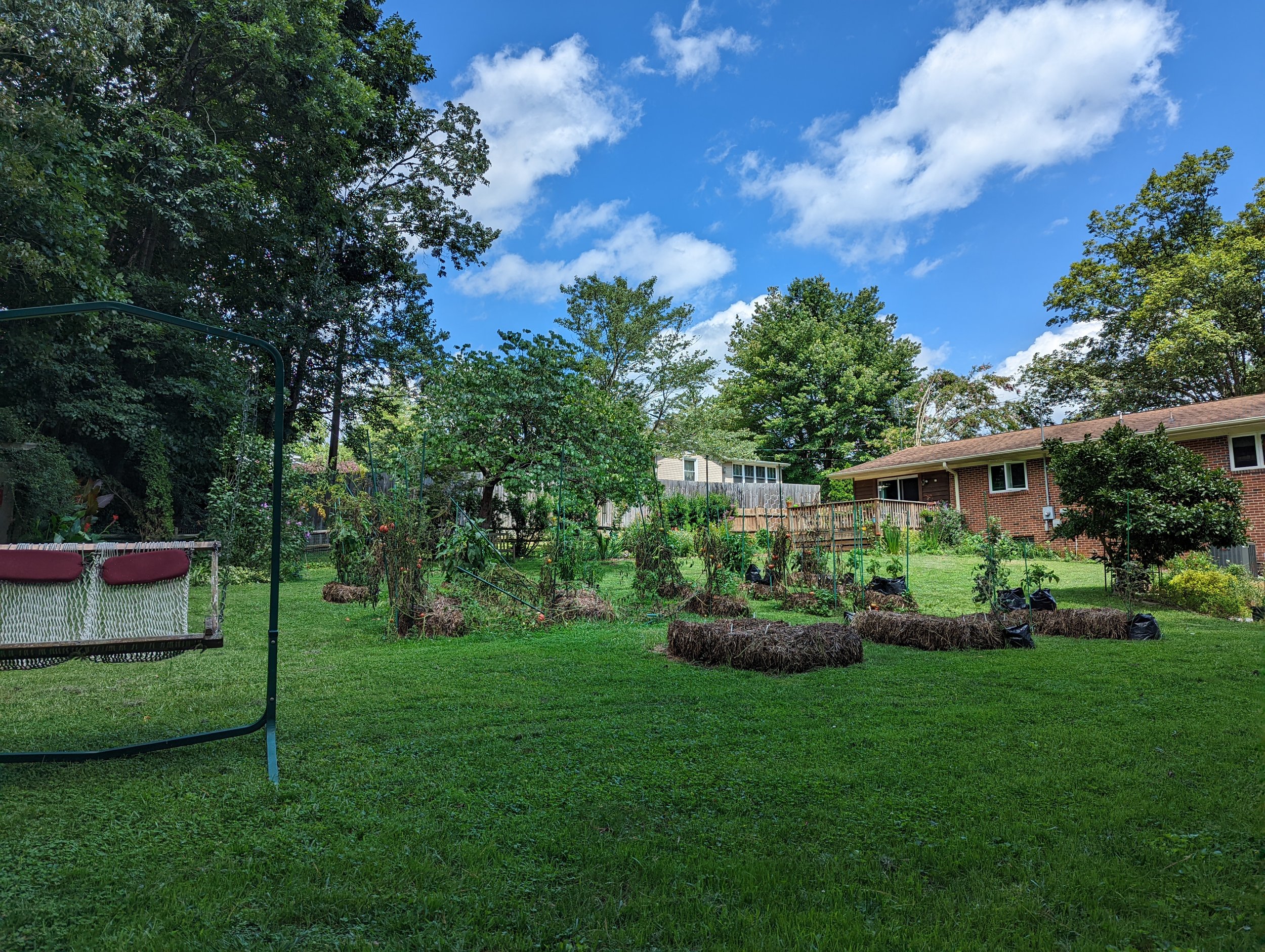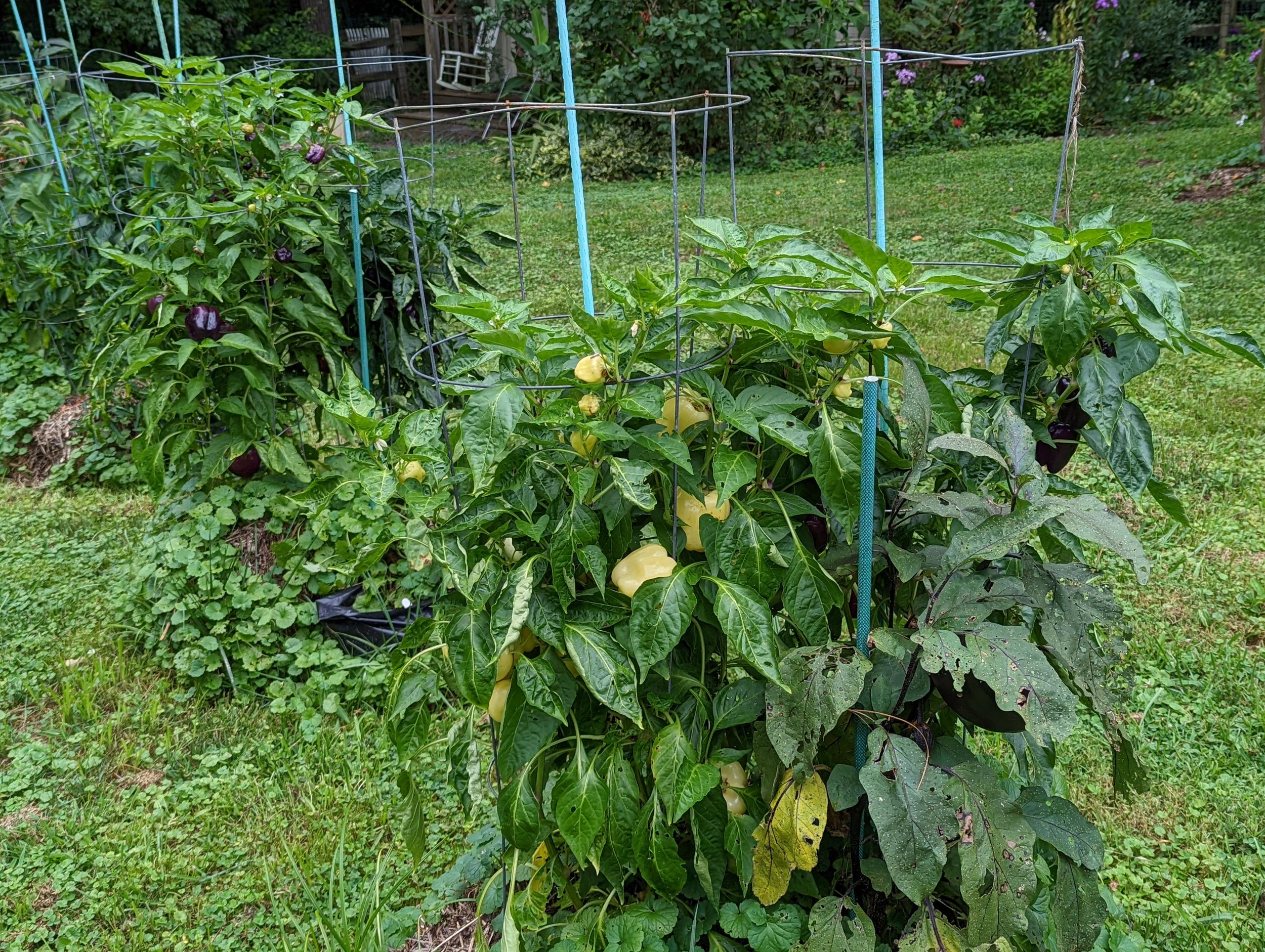Triple Falls in DuPont Forest - captured early Sept 2022
It’s September, the garden is put to bed, Off The Vine posts continue - and it is also time to resume the trip through my tomato collection. I will be taking it in bigger bites, because there will be much less to say about quite a few from here on in - I was building my collection, but not being quite so discriminating.
Tomato #251 - Mexico Midget - so many cherish this variety, sent to me in 1990 by Barney Laman of California when he was in his mid 80s. He got this variety, which he called a “joke” due to its tiny size, from his brother, who acquired it in his hay delivery runs between Texas and Mexico. For such a tiny (as in pea-sized) tomato, it packs a wallop of flavor. The main issue is that any seed company selling it is selling crossed seed (probably originating with the SSE, who started selling packs of seeds that produced fruit significantly larger and less flavorful - and still do). The issue is that it is an odd variety that doesn’t germinate as well as other tomato varieties. I found that the way to remedy this is to add actively fermenting juice from a different variety to the Mexico Midget seed goop, then let it ferment for a few days. Problem solved!
Tomato #252 - Jim’s Red Delight - this was sent to me unrequested by Jim Kohl in 1990. I’d have to find the letter that accompanied the seeds or more details. I recall it being listed at some point in the SSE yearbook, but it isn’t listed in the exchange any longer. I never did get to grow it.
Tomato #253 - Rutgers Select - sent to me by SSE member MO VI N in 1990, I never managed to grow it out. It is obviously a selection from the old 1930s variety Rutgers, a very important tomato across America for many decades.
Tomato #254 - Harbinger - another variety from MO VI N sent in 1990 and another I’ve not grown. Reportedly an English variety from 1910, it is apparently a medium sized, round red tomato that was very likely used for greenhouse growing in a country where outdoor tomatoes are a challenge.
Tomato #255 - Orange Queen - this is the last of the trio of tomatoes from MO VI N sent in 1990, and not grown out by me. It is likely an older Stokes variety. I suspect it is similar to Jubilee, Sunray or Valencia, with medium sized mild flavor orange tomatoes.
Tomato #256 - Portuguese Large Plum - sent to me as a personal favorite of Patty Carman of New York in 1990, I never did get to grow this out. I would have to locate the letter to find out the description, but it is very likely a long red paste tomato such as Opalka.
Tomato #257 - Large Italian Paste - also sent to me by Patty Carman in 1990, I don’t have the description of this variety handy, but suspect it is also an Opalka-type long red paste tomato. I never did grow it out.
Tomato #258 - Russian Sweet #2 - sent to me by SSE member Lloyd Duggins of Indiana in 1990, the seeds didn’t germinate for me when I tried to grow it out. I would have to search for his letter to find out the description of this variety, but can imagine it being a large fruited pink beefsteak type.
Tomato #259 - Deep Yellow German - also sent to me by Lloyd Duggins of Indiana in 1990, I did grow this out in 1996. My garden log states that this was a 4-8 ounce golden colored tomato with very good productivity and flavor.
Tomato #260 - Pepper Tomato - sent to me by NY KI K in 1990, I have no description for this, but imagine it is a somewhat bell pepper shaped medium sized scarlet tomato that tends to be quite hollow. I never did grow it.
Tomato #261 - Cornish - another of the family heirloom tomatoes sent to me by Charlotte Mullens of WV in 1990, I did grow this in 1990. It is a medium sized red tomato sent to Charlotte by Florence Cornish. I don’t recall it being particularly outstanding.
Tomato #262 - Toensfeldt - also from Charlotte Mullens and sent to me in 1990, I did grow this out in 1990. It was a compact determinate medium sized red tomato of no special attributes.
Tomato #263 - Texas Pink - another 1990 acquisition from Charlotte Mullens, I never did grow it. In SSE listings it is described as a typical large pink beefsteak type. Charlotte must have received it from Barbara Lund of Ohio - Barbara got the variety as a seedling in Ohio in 1984.
Tomato #264 - Bower - the last of the Charlotte Mullens tomatoes, I grew this in 1990 and found the medium sized red tomatoes to be pleasant but not outstanding.
Tomato #265 - Mexico - this is the start of a set of tomatoes sent to me by NY BE R in 1990. I did grow it in 1991. My description is for large scarlet fruit with fair flavor, but not memorable.
Tomato #266 - Dinner Plate A - another from NY BE R sent in 1990, Dinner Plate in general is a mess of a variety, described as heart shaped or beefsteak, pink or red. I grew this in 1991 - the regular leaf plants gave medium to large scarlet slightly oblate tomatoes that were delicious.
Tomato #267 - Dinner Plate B - also sent to me in 1990 by NY BE R, this was a totally different animal! Completely unlike Dinner Plate A (except in color), the very spindly, weak looking plant produced big, fat scarlet plum type fruit with great flavor when grown in 1991.
Tomato #268 - German - part of the group sent to me by NY BE R in 1990, I grew German in 1991 and wound up with large, good flavored scarlet red tomatoes. There are so many tomatoes with the name “German” or variations that it is impossible to know if this tomato is still being grown and shared.
Tomato #269 - Peking - this tomato, sent to me in 1990 by NY BE R, never did get grown out. It is still listed with the SSE as a smooth red high yielding tomato. Its history is unknown.
Tomato #270 - Aztec - yet another tomato from NY BE R in 1990, I really enjoyed this medium sized, smooth scarlet round tomato. The flavor was really fine and I believe I sent it to Johnny’s for inclusion in their catalog some years ago. It apparently is a Don Branscomb introduced variety (Don was a significant tomato collector in the 1980s, often mining the USDA seed banks). It is now quite obscure.
Tomato #271 - Siberia - yes indeed - another from NY BE R, sent in 1990, and never grown. Reports are of it being a compact, small fruited, very early red variety. Several tomatoes have similar names.
Tomato #272 - Orange Steak - One more from NY BE R, sent 1990, I never did get this to germinate, which was disappointing. Absolutely nothing is known about this variety; I assumed it was a large beefsteak type of orange coloring.
Tomato #273 - Landry’s Russian - this is the last of the 1990 sent NY BE R varieties. It seems to be a Canadian heirloom with medium sized round red tomatoes.
Tomato #274 - No Name (which I renamed Pink Sweet) - I received this tomato from Hazel Turner of Tennessee in 1990. It is a fine tomato - No Name didn’t seem appropriate, and it being pink and sweet - voila! - the name. Hazel said that she acquired seed from an 84 year old man who had it for 20 years. It is a large pink beefsteak type, regular leaf, with some ridges and green shoulders, but superb flavor.
Tomato #275 - Syrian Globe - I received this tomato from PA WH R in 1990. It was unusual in being determinate in growth habit, with medium sized round red tomatoes. The flavor was nothing to write home about, and the texture quite firm. It seems to have passed on into obscurity.
___________________
I actually only grew out 12 of these 25 tomatoes. The best by far is No Name, which I decided to call Pink Sweet. Aztec and Dinner Plate A and B were quite good also, but in general, this was not a stellar set of tomatoes.
High Falls, DuPont Forest, captured on an early Sept 2022 hike with Sue






















